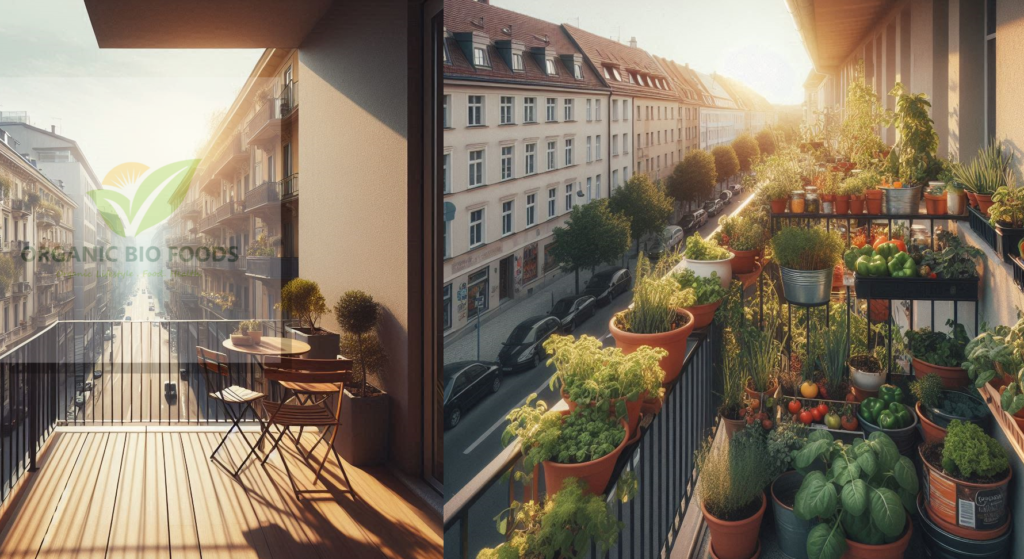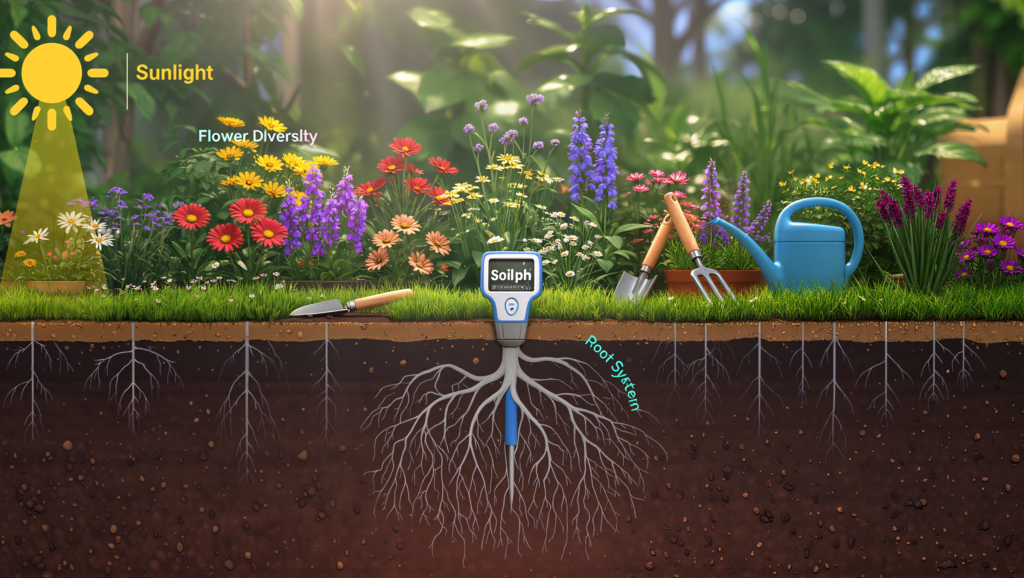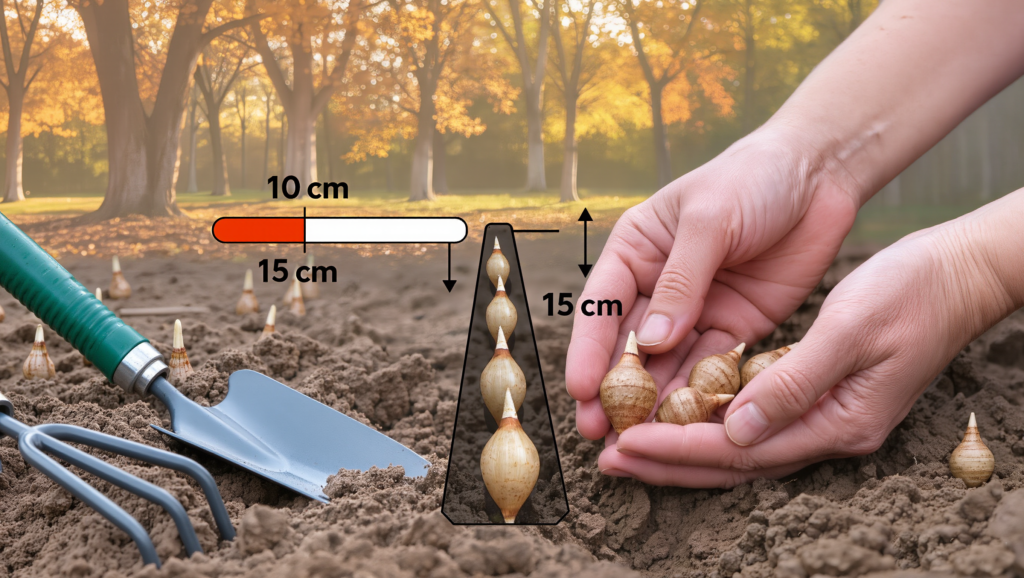Transforming your balcony into a mini organic farm is a rewarding way to grow fresh, healthy produce right at home. Whether you live in an apartment or have limited outdoor space, a balcony garden can provide you with a surprising amount of fruits, vegetables, and herbs. Plus, it’s a fantastic way to reconnect with nature, reduce your carbon footprint, and enjoy the satisfaction of harvesting your own organic produce. We at Organicbiofoods have put a step-by-step (15 mins read time) guide to help you get started.
Tools you will be needing to perform this ask:
Gardening Trowel, Watering Can or Hose with Nozzle, Pruning Shears, Gloves, Hand Fork or Cultivator, Plant Labels, Measuring Tape, Spray Bottle:
Materials:
Organic Potting Mix, Compost, Organic Fertilizer (e,g compost tea, fish emulsion, or bone meal), Containers or Pots, Seeds or Seedlings,
- Trellis or Stakes: If you’re growing climbing plants like tomatoes or beans, you’ll need a trellis or stakes to support their growth.
- Plant Supports: For plants like peppers or eggplants that may need additional support as they grow, consider using tomato cages or other plant supports.
- Pest Control Solutions: Organic options like neem oil, insecticidal soap, or diatomaceous earth help control pests without harming your plants or the environment.
- Mulch: Organic mulch, such as straw or wood chips, helps retain moisture, suppress weeds, and regulate soil temperature in your containers.
Optional Extras:
Self-Watering Containers: Help maintain consistent moisture levels, especially if you have a busy schedule.
Windbreaks: Such as bamboo screens or plant covers, to protect your plants from strong winds.
Vertical Garden Structures: Shelves, hanging baskets, or wall planters can maximize space and add aesthetic appeal.
Grow Lights: If your balcony doesn’t get enough sunlight, consider using grow lights to supplement natural light and ensure your plants receive adequate illumination.
Once you have these basic tools then you are on the first step.
1. Assess Your Space and Light Conditions
Before you start planting, it’s important to evaluate the space and light conditions on your balcony.
Key Considerations:
Size of the Balcony: Measure the available space to determine how many containers you can fit without overcrowding.
Sunlight: Observe how much direct sunlight your balcony receives. Most vegetables and herbs require at least 6 hours of sunlight per day. South or west-facing balconies usually get the most sun.
Wind: Balconies can be windy, which might dry out your plants quickly. Consider installing windbreaks like bamboo screens or growing hardy plants that can tolerate wind.
2. Plan Your Garden Layout
With your space and light conditions in mind, it’s time to plan your garden layout.
Tips for Planning:
- Vertical Gardening: Use vertical space to your advantage. Install shelves, hanging pots, or trellises to grow plants upward, and save floor space for larger containers.
- Companion Planting: Group plants that grow well together, such as tomatoes with basil or lettuce with carrots. This practice can maximize your yield and protect plants from pests.
- Accessibility: Ensure that all plants are easily accessible for watering, pruning, and harvesting, make sure to keep foot pathway access for each plant.
3. Choose the Right Containers
Selecting the right containers might one of the most important decisions you would have to make while embarking on this adventure as it will be crucial for the health of your plants.
Sizing Tip: Larger containers retain moisture better and allow roots to spread, which is particularly important for growing vegetables like tomatoes or peppers, smaller containers work better for herbs.
Here are some Container Options:
- Pots and Planters: Choose containers with good drainage holes to prevent waterlogging. Terracotta pots, fabric grow bags, and plastic planters are all good options.
- Hanging Baskets: Ideal for trailing plants like strawberries or herbs. They free up floor space and add greenery at different levels.
- Window Boxes: Perfect for growing herbs, salad greens, and small root vegetables. Window boxes can be attached to balcony railings to save space.
4. Prepare Your Soil
While Container pots are very important to make in this sojourn, Organic farming starts with healthy, nutrient-rich soil. For your balcony garden, using the right soil mix is the primary key to thriving plants.
Soil Preparation:
- Organic Potting Mix: Purchase a high-quality organic potting mix, which is lighter than garden soil and drains well. Avoid using soil from the ground, as it may be too heavy and lack nutrients.
- Compost: Mix in compost or worm castings to provide essential nutrients. You can buy organic compost or start your own small compost bin on your balcony using kitchen scraps.
- Fertilizer: Add organic fertilizer like fish emulsion, bone meal, or liquid seaweed to enrich the soil, especially for nutrient-hungry plants like tomatoes.
5. Select Your Plants
Now comes the fun part—choosing what to grow and what quantities, but we believe you should have this decision already locked down before even venturing into organic farming. However here are some suggestions we believe would be thriving plants for a balcony farm.
- Herbs: Basil, mint, parsley, and chives are easy to grow in small spaces and add fresh flavor to your meals.
- Vegetables: Tomatoes, peppers, lettuce, spinach, radishes, and carrots are all excellent choices for container gardening.
- Fruits: Strawberries and dwarf varieties of fruit trees, like lemons or figs, can thrive in pots.
- Flowers: Consider adding some edible flowers like nasturtiums or marigolds, which attract pollinators and add color to your balcony.
- Pro Tip: Start with easy-to-grow plants if you’re new to gardening. Herbs, lettuce, and radishes are beginner-friendly options.
6. Planting Your Garden
Once you know what you would be growing and you have the seeds in hand, it’s time to get them in the soil.
Steps for Planting:
- Fill Containers: Fill your containers with the prepared potting mix, leaving a few inches of space at the top.
- Planting Seeds or Seedlings: If planting seeds, follow the instructions on the packet for depth and spacing. For seedlings, gently loosen the roots before placing them in the soil.
- Watering: Water thoroughly after planting to help settle the soil around the roots. Be sure to water slowly to avoid washing away seeds.
Spacing Tip: Don’t overcrowd your containers. Give each plant enough space to grow and allow air circulation to prevent disease.
7. Watering and Maintenance
Consistent watering and regular maintenance are key to a having a succesful balcony garden.
Watering Tips:
- Frequency: Water your plants regularly, especially during hot, dry periods. Containers dry out faster than actual garden soils, so check the soil moisture daily.
- Morning Watering: Watering in the morning helps prevent fungal diseases and ensures plants have moisture during the hottest part of the day.
- Self-Watering Systems: Consider installing self-watering pots or using a drip irrigation system to maintain consistent moisture levels, especially if you’re away frequently.
Maintenance Tasks:
- Pruning and Harvesting: Regularly prune your plants to encourage growth and remove dead or yellowing leaves. Harvest herbs and vegetables as they mature to keep plants productive.
- Pest Control: Keep an eye out for pests like aphids or spider mites. Use organic pest control methods, such as neem oil or introducing beneficial insects like ladybugs.
8. Harvesting
After weeks of care and attention, and mistakes(there will be some) and corrections it’s time to enjoy the fruits (and vegetables) of your labor!
Harvesting Tips:
- Pick Regularly: Harvest vegetables and herbs regularly to encourage more growth. For example, picking basil leaves frequently promotes a bushier plant.
- Storage: Use your fresh produce immediately for the best flavor, or store it properly to extend its shelf life. Fresh herbs can be dried or frozen for later use.
Finally, turning your balcony into a mini organic farm is a fulfilling, rewarding and eco-friendly way to grow your own food. So, grab your gardening tools, no more excuses, turn that balcony into a farm today and start saving on grocery shopping!








